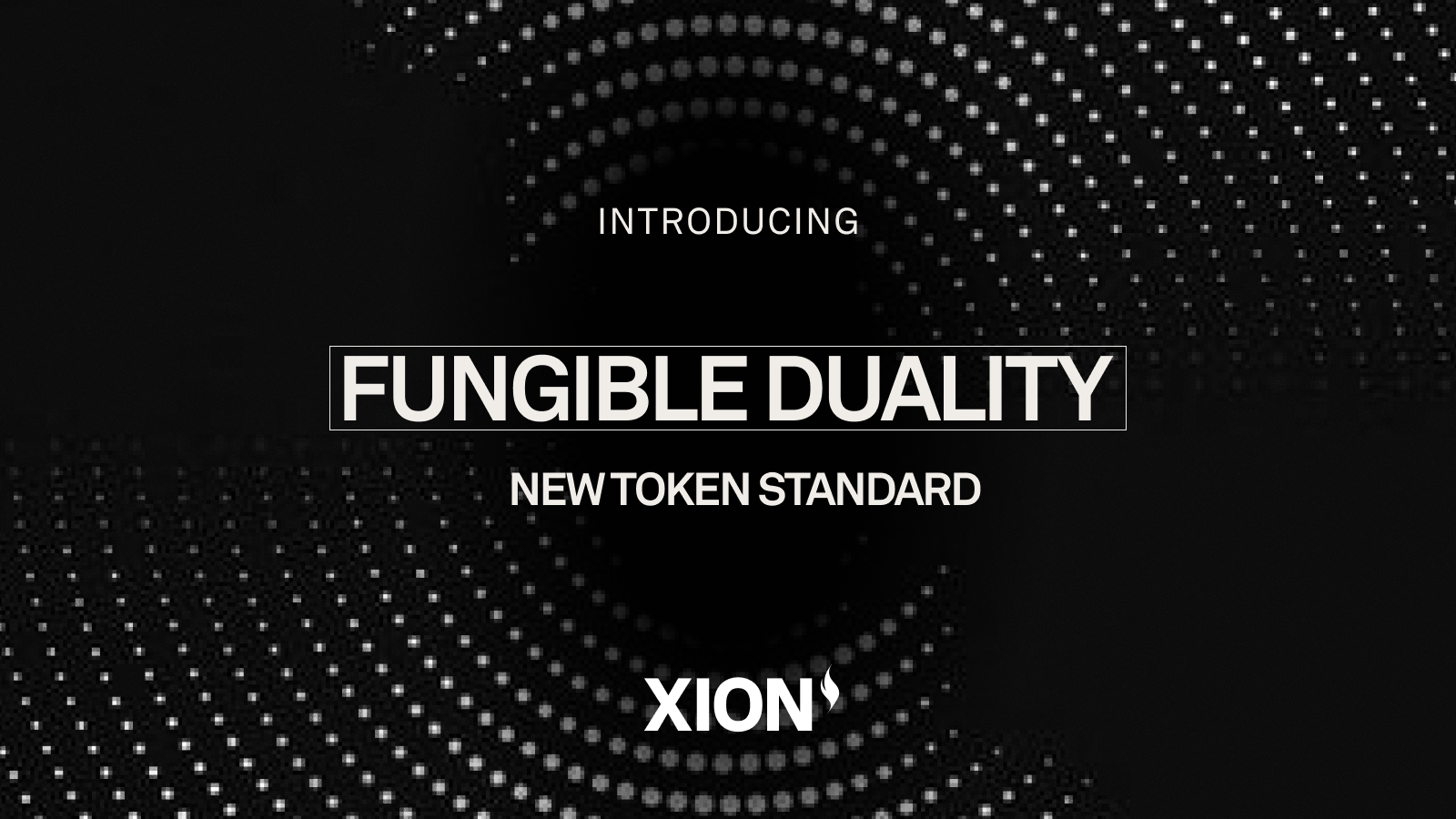XION Introduces Fungible Duality Token Standard
Fungible Duality is an exciting framework upon which novel consumer-facing use-cases can be built.

We’re excited to introduce the Fungible Duality token standard on XION! An experimental standard leveraging the benefits of uniqueness and fungibility, it has the potential to enable novel consumer facing use-cases related to fractionalized ownership and loyalty systems.
Intro
The introduction of the Fungible Duality standard on XION opens the door for exciting innovation. The standard combines the interchangeability of fungible tokens with the distinctiveness of non-fungible tokens, offering a framework for new types of assets and ownership standards. By enabling tokens to possess both uniform and unique properties, Fungible Duality paves the way for innovative applications and use cases, from fractional ownership of rare assets to multi-faceted digital collectibles.
What is Fungibility?
Fungibility is a property of an asset where each unit is interchangeable and indistinguishable from another unit of the same type. In simpler terms, if something is fungible, one unit of it can be replaced by another unit without losing value or utility. This concept is central to how traditional currencies work, where, for example, one dollar bill is equivalent and interchangeable with another dollar bill.
In the context of blockchain and Ethereum's token standards, fungibility plays a crucial role in defining the behavior and use cases of digital assets:
ERC-20 tokens are fungible, meaning each token is identical to another in value and function. This makes ERC-20 tokens ideal for creating cryptocurrencies, utility tokens, or any digital asset that requires uniformity and interchangeability. It is also possible to hold a fraction of a token.
ERC-721 tokens are non-fungible, which means each token is unique and not interchangeable with another token. This uniqueness allows ERC-721 tokens to represent ownership or proof of authenticity for distinct assets like digital art, collectibles, or even real estate in virtual worlds. Each ERC-721 token can carry specific attributes that differentiate it from others, making it valuable for applications that require proof of individuality and ownership. A user is unable to own a fraction of an ERC-721 token.
What is Fungible Duality?
Fungible Duality, in this context, refers to the exciting concept of blending the properties of both fungibility and non-fungibility within a single digital asset standard. This innovative approach allows tokens to embody characteristics of interchangeable value, akin to ERC-20 tokens, while also possessing unique, indivisible attributes reminiscent of ERC-721 tokens, as well as a mixture. Essentially, it creates a new class of digital assets that can function as both a common currency and as distinctive, one-of-a-kind items or rights. By leveraging the Fungible Duality standard, developers building consumer-facing applications can tap into a more versatile and nuanced ecosystem of digital ownership and exchange.
There have been other exciting recent innovations, namely the ERC-404 standard, which attempt to blend both token standards into one. The Fungible Duality standard goes one step further, enabling a token to be non-fungible, fungible, or both. It is highly versatile and opens up unprecedented opportunities for applications, as well as making it a lot easier for existing applications to integrate. For example, it paves the way for enhanced digital collectibles that can carry both unique art and tradable attributes, dynamic event ticketing that merges seat allocation with redeemable in-venue credits, and fractional ownership of high-value physical assets, to name a few applications. These use cases demonstrate the standard's potential to impact various verticals, from gaming and entertainment to art and loyalty, by offering more nuanced and flexible ownership models. In addition, the XION blockchain is an ideal platform for this standard, thanks to its consumer-focused architecture, which emphasizes accessibility, user-friendliness, and mainstream adoption.
Conclusion
The Fungible Duality standard introduces an exciting experimental framework upon which novel consumer-facing use-cases can be built. By enabling tokens to be both divisible and unique, it creates new opportunities for acquisition, engagement, and retention of users. When combined with XION’s consumer-facing infrastructure, it unlocks a plethora of innovative use cases and applications, further pushing the industry towards mainstream adoption.